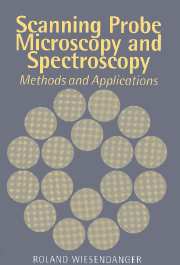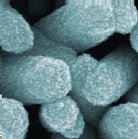Refine search
Actions for selected content:
106069 results in Materials Science
Nano Focus: Low-temperature aqueous synthesis yields large surface area tin oxide nanocrystals
-
- Journal:
- MRS Bulletin / Volume 35 / Issue 11 / November 2010
- Published online by Cambridge University Press:
- 31 January 2011, pp. 834-836
- Print publication:
- November 2010
-
- Article
-
- You have access
- Export citation
Numerical approaches and experimental verification of the conical indentation techniques for residual stress evaluation
-
- Journal:
- Journal of Materials Research / Volume 25 / Issue 11 / November 2010
- Published online by Cambridge University Press:
- 31 January 2011, pp. 2212-2223
- Print publication:
- November 2010
-
- Article
- Export citation
Environmental impact of the nuclear fuel cycle: Fate of actinides
-
- Journal:
- MRS Bulletin / Volume 35 / Issue 11 / November 2010
- Published online by Cambridge University Press:
- 31 January 2011, pp. 859-866
- Print publication:
- November 2010
-
- Article
- Export citation
Compressive deformation and damage of Mg-based metallic glass interpenetrating phase composite containing 30–70 vol% titanium
-
- Journal:
- Journal of Materials Research / Volume 25 / Issue 11 / November 2010
- Published online by Cambridge University Press:
- 31 January 2011, pp. 2192-2196
- Print publication:
- November 2010
-
- Article
- Export citation
Enhancement of plasticity in Ti-based metallic glass matrix composites by controlling characteristic and volume fraction of primary phase
-
- Journal:
- Journal of Materials Research / Volume 25 / Issue 11 / November 2010
- Published online by Cambridge University Press:
- 31 January 2011, pp. 2183-2191
- Print publication:
- November 2010
-
- Article
- Export citation
Theoretical analysis of the relationships between hardness, elastic modulus, and the work of indentation for work-hardening materials
-
- Journal:
- Journal of Materials Research / Volume 25 / Issue 11 / November 2010
- Published online by Cambridge University Press:
- 31 January 2011, pp. 2072-2077
- Print publication:
- November 2010
-
- Article
- Export citation
Processing and electrical properties of Pb0.6Ba0.4Nb2O6 ceramics
-
- Journal:
- Journal of Materials Research / Volume 25 / Issue 11 / November 2010
- Published online by Cambridge University Press:
- 31 January 2011, pp. 2143-2149
- Print publication:
- November 2010
-
- Article
- Export citation
Spectroscopic characterization of actinide materials
-
- Journal:
- MRS Bulletin / Volume 35 / Issue 11 / November 2010
- Published online by Cambridge University Press:
- 31 January 2011, pp. 889-895
- Print publication:
- November 2010
-
- Article
- Export citation
Crystallization kinetics of Si3N4 in Si–B–C–N polymer-derived ceramics
-
- Journal:
- Journal of Materials Research / Volume 25 / Issue 11 / November 2010
- Published online by Cambridge University Press:
- 31 January 2011, pp. 2150-2158
- Print publication:
- November 2010
-
- Article
- Export citation
Nanomaterials and structures for the fourth innovation of polymer electrolyte fuel cell
-
- Journal:
- Journal of Materials Research / Volume 25 / Issue 11 / November 2010
- Published online by Cambridge University Press:
- 31 January 2011, pp. 2063-2071
- Print publication:
- November 2010
-
- Article
- Export citation
Energy Focus: Low bandgap, silole-containing heteroarene polymers developed for solar cells
-
- Journal:
- MRS Bulletin / Volume 35 / Issue 11 / November 2010
- Published online by Cambridge University Press:
- 31 January 2011, p. 834
- Print publication:
- November 2010
-
- Article
-
- You have access
- Export citation
Sintering of hierarchically structured ZnO
-
- Journal:
- Journal of Materials Research / Volume 25 / Issue 11 / November 2010
- Published online by Cambridge University Press:
- 31 January 2011, pp. 2125-2134
- Print publication:
- November 2010
-
- Article
- Export citation
Energy Focus: Modified SMP allows high resolution mapping of lithium-ion diffusion
-
- Journal:
- MRS Bulletin / Volume 35 / Issue 11 / November 2010
- Published online by Cambridge University Press:
- 31 January 2011, p. 836
- Print publication:
- November 2010
-
- Article
-
- You have access
- Export citation
Emerging areas of actinide science
-
- Journal:
- MRS Bulletin / Volume 35 / Issue 11 / November 2010
- Published online by Cambridge University Press:
- 31 March 2011, pp. 841-847
- Print publication:
- November 2010
-
- Article
- Export citation
A plastic damage model for finite element analysis of cracking of silicon under indentation
-
- Journal:
- Journal of Materials Research / Volume 25 / Issue 11 / November 2010
- Published online by Cambridge University Press:
- 31 January 2011, pp. 2224-2237
- Print publication:
- November 2010
-
- Article
- Export citation
Combinatorial nanocalorimetry
-
- Journal:
- Journal of Materials Research / Volume 25 / Issue 11 / November 2010
- Published online by Cambridge University Press:
- 31 January 2011, pp. 2086-2100
- Print publication:
- November 2010
-
- Article
- Export citation
E-MRS Spring Meeting runs the gamut of cutting-edge research
-
- Journal:
- MRS Bulletin / Volume 35 / Issue 11 / November 2010
- Published online by Cambridge University Press:
- 31 January 2011, pp. 909-927
- Print publication:
- November 2010
-
- Article
-
- You have access
- Export citation

Scanning Probe Microscopy and Spectroscopy
- Methods and Applications
-
- Published online:
- 05 October 2010
- Print publication:
- 29 September 1994
Solution growth of functional zinc oxide films and nanostructures
-
- Journal:
- MRS Bulletin / Volume 35 / Issue 10 / October 2010
- Published online by Cambridge University Press:
- 31 January 2011, pp. 778-789
- Print publication:
- October 2010
-
- Article
- Export citation
Synthesis and upconversion luminescence properties of CaF2:Yb3+,Er3+ nanoparticles obtained from SBA-15 template
-
- Journal:
- Journal of Materials Research / Volume 25 / Issue 10 / October 2010
- Published online by Cambridge University Press:
- 31 January 2011, pp. 2035-2041
- Print publication:
- October 2010
-
- Article
- Export citation

